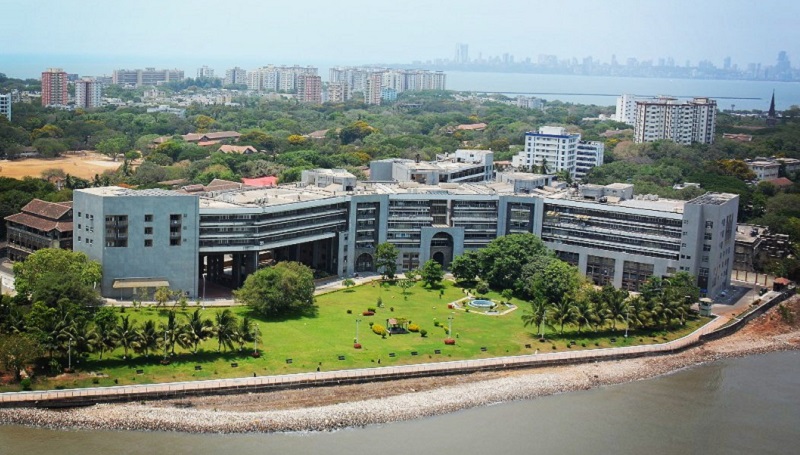A prison, a group of mansions, a missile manufacturer and a naval base are among the urban areas categorised as ‘forest’ by the Indian government, a Climate Home News analysis of satellite imagery reveals.
The United Nations Food and Agriculture Organisation (FAO) guidelines say forests are defined by the “presence of trees and the absence of other predominant land uses”. It adds: “It does not include land that is predominantly under agricultural or urban land use”.
Indian forestry experts have accused successive governments of exaggerating the extent of India’s forest cover in order to make it easier to meet climate targets and access more climate finance for protecting forests.
For the first time, the government’s latest bi-annual ‘State of the Forests report’ (ISFR) maps what it regards as forestry cover in India’s seven biggest cities. An area of land over one hectare with as little as 10% canopy density is included in the tally.
According to the ISFR report, 5% of the city of Hyderabad is now covered with forest. This is more than double the level recorded of 2011.
This rise drew praise from within India and abroad. “Congrats Hyderabad!”, tweeted the president of the Green Belt and Road Institute Erik Solheim. “Good news”, said Times of India editor Syed Akbar.
But comparing the ISFR’s map of Hyderabad with satellite imagery from Google Earth shows that among the areas counted as medium density forests are the campus of Osmania University and the area known as “lab quarters” centred around headquarters of Indian missile manufacturer Bharat Dynamics.

The headquarters of missile manufacturer Bharat Dynamics is counted as forest. (Picture: Google Earth/Screenshot)
Shubham Sharma is a researcher at the Indian institute of forest management who lived in Hyderabad for two years. He told Climate Home News: “This is a defence establishment. The Indian Defence and Research Development organisations, wherever they are, in multiple cities, they have these big campuses and residential areas and it might have a lot of green but that doesn’t make it a forest”.
Similarly, he said, large campuses of universities like Osmania often have landscaping which includes green carpets and trees.

The Navy Nagar area of Mumbai. On the left is a golf course, which is not counted as forest. The area on the right is counted as ‘open forest’. (Picture: Screenshot/Google Earth)
In the coastal mega-city of Mumbai, the government has classified much of the area known as Navy Nagar as ‘open forest’. The area is on Mumbai’s southern tip and is controlled by the Indian Navy and houses its sailors. Satellite imagery reveals the ‘open forest’ is formed by trees in the streets and gardens around these naval offices and accommodation.
One Mumbai resident, who works near to the area and wanted to remain anonymous “because the government here is not the most friendly”, told Climate Home “there’s no forest in Navy Nagar”.
In the Gujarati city of Ahmedabad, ‘open forest’ includes the Sabarmati Central jail whose spoke-and-wheel design includes rows of trees between buildings. The prison is surrounded by a railway and one side and the densely-populated Vijay Nagar neighbourhood on the other.

The area around Sabarmati central jail in Ahmedabad is counted as forest. (Picture: Google Earth/Screenshot)
In Delhi, much of the city’s southern border around the Asola wildlife sanctuary is considered ‘open forest’ including holiday homes known as ‘farmhouses’ for the wealthy and densely-populated settlements like Bhatti Mines for the poor.
Souparna Lahiri, a Delhi-based campaigner for the Global Forest Coalition said: “For years, these have been illegally converted into settlements by the construction lobby and the very rich people who grabbed and bought land”.
The swimming pools, lawns and long driveways of these farm houses are visible from satellite imagery. Lahiri said most of the owners come to these homes only on weekends or special occasions. Sometimes, the properties are rented out for weddings.

These ‘farm houses’ host wealthy people and are counted as forest. (Picture: Google Earth/Screenshot)
Sharma said that planting trees in urban areas helps with local air pollution and shade. But, he said, when they are outside forests they don’t help to sequester much carbon.
“You might think the trees are the main source absorbing carbon but it is is not the tree it is actually the soil,” he said. “In a forest, around 50% of the carbon is in the forest soil.”
Lahiri said that, for decades, successive Indian governments have sought compensation for not turning their forests to other uses. This incentivises them to use a broad definition of what a forest is.
“India has been targeting international funding for [a] long [time] on the basis of compensation for opportunity lost for development,” he said, citing India’s enthusiastic participation in the Kyoto Protocol’s Clean Development mechanism.
India has set a 2030 target of having 33% of its land under tree cover, as part of its National Mission for a Green India. The ISFR says the figure is now 22%.
In its 2015 climate plan, the government also committed to creating a carbon sink to sequester an additional 2.5 to 3 billion tonnes of CO2, through increasing tree and forest cover. This climate plan is expected to be updated this year and may include new forestry targets.
